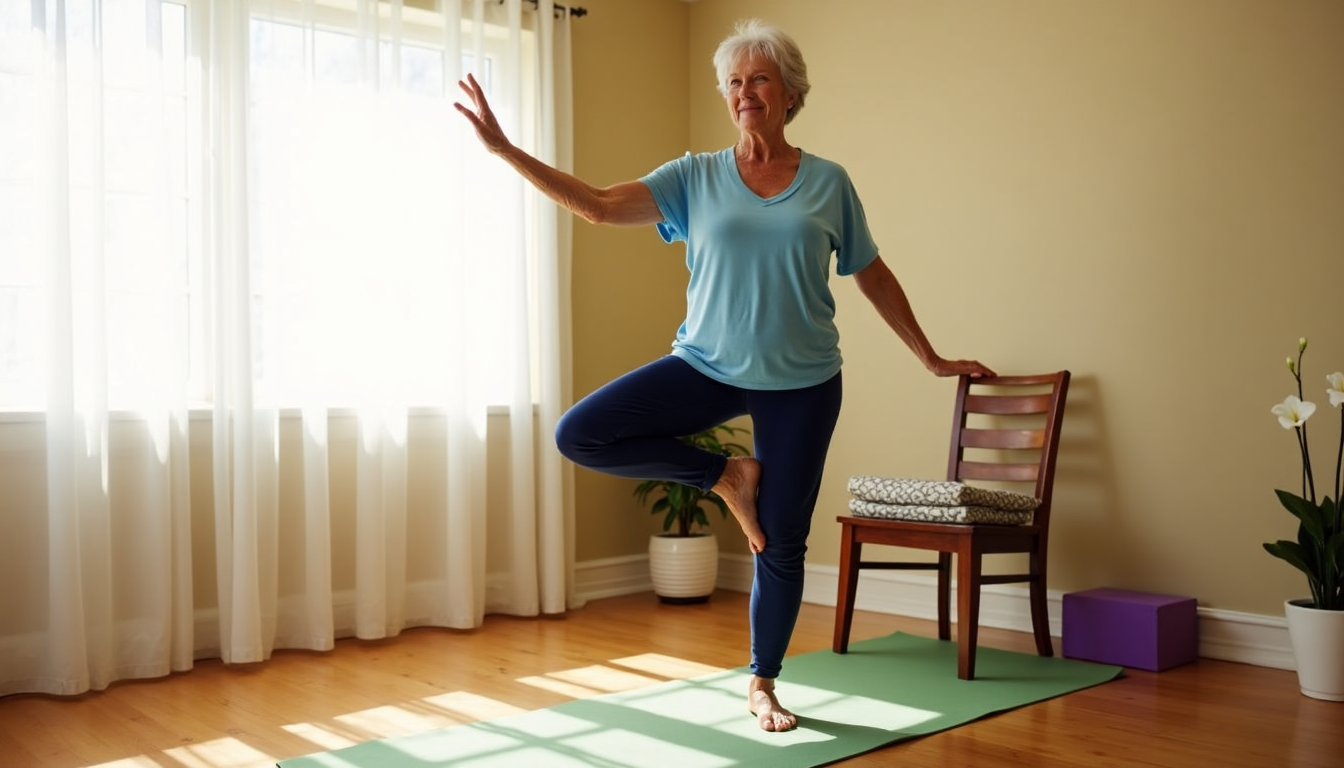Traditional walkers force seniors to bend forward when walking, causing back pain and discomfort over time. Upright walkers address this problem by supporting weight on the forearms rather than the wrists, allowing users to maintain a straight posture.
The differences between these mobility aids extend beyond their basic function. Upright walkers specifically reduce pressure on key areas including the lower back, neck, arms, and wrists – all common sources of pain with standard walkers.
This comparison examines how regular and upright walkers differ in physical design, health benefits, and practical applications. The analysis provides essential information for seniors considering a mobility aid upgrade or family members researching options for loved ones, focusing on which type offers better support for maintaining independence and activity levels.
Physical Design Differences: Regular vs Upright Walkers for Seniors
Standard and upright walkers for seniors differ fundamentally in structural design, creating significant variations in user comfort, posture, and mobility experiences.
Height and Handle Positioning: Impact on Posture
Standard rollator walkers place handlebars at waist level, forcing users to lean forward while walking. This hunched position creates substantial strain on the back, shoulders, and wrists. Many seniors report increasing discomfort and pain with prolonged use of traditional models.
Upright walkers feature significantly taller handles positioned directly below the elbow, higher than traditional rollators. These elevated handles include forearm supports where users rest their arms, shifting weight away from hands and wrists. The design promotes a natural standing position with proper spine alignment, shoulders back, and head upright.
Weight Distribution and Stability Comparison
Weight distribution between these walker types produces notable safety differences. Upright walkers position the user’s center of gravity higher, requiring a wider and more stable base to prevent tipping. Quality upright models utilize a longer wheelbase with a low center of gravity to compensate for the elevated arm position.
Standard walkers achieve stability through user weight directed downward through the wrists, while upright designs distribute weight across the forearms. This difference makes standard walkers somewhat more stable in certain situations despite being less comfortable during extended use.
Wheel Size and Maneuverability Factors
Wheel size significantly affects walker performance across varying terrains:
- Standard rollators typically feature 5″-8″ wheels that struggle with thresholds and uneven surfaces
- Upright walkers often include larger 8″-10″ wheels for improved obstacle management
- Larger wheels (10″-14″) handle rough terrain better, making outdoor use more practical
A wheel can only climb obstacles up to approximately 15% of its diameter. A walker with 8″ wheels can manage obstacles about 1.2″ high, while 10″ wheels can handle 1.5″ obstacles.
Folding Mechanisms and Portability
Both walker types fold for storage and transportation, though their mechanisms differ. Standard walkers generally weigh less (typically 12-15 pounds) compared to upright models (18+ pounds). Many upright walkers feature one-button folding systems, particularly valuable for seniors with limited hand strength.
Quality upright walkers with seats typically use aluminum frames to balance durability with portability. Transportation considerations remain critical for seniors who travel frequently or have limited storage space.
Health Benefits Comparison: Which Walker Supports Better Posture?
The health implications of walker design extend beyond structural differences. Research indicates significant benefits from upright posture for seniors needing mobility assistance.
Back and Neck Strain: Clinical Evidence
Traditional walkers promote poor posture habits that create uneven body weight distribution, leading to shoulder, neck, and lower back pain. Studies show conventional walkers force users to hunch forward, eventually causing joint degeneration and worsening discomfort. Upright walkers address these issues by positioning handles higher, just below the elbows, effectively transferring weight away from vulnerable joints.
Wrist and Arm Pressure Points
Standard walkers place significant pressure on sensitive points in the hands and wrists. Their hip-level handlebars force weight-bearing through these areas. Upright walkers redistribute this pressure by supporting weight through the forearms rather than wrists. This design change reduces ulnar nerve compression that typically occurs with prolonged pressure on hand pressure points.
Balance and Fall Prevention Statistics
Falls pose a serious threat to senior health:
- More than one in four older adults falls annually
- Falls caused 38,000 deaths among those 65+ in 2021
- Fall-related costs are projected to exceed $101 billion by 2030
Upright walkers promote better balance through proper body alignment. However, both walker types still present fall risks, with approximately 41,000 US emergency room visits yearly associated with walker use.
Respiratory Function and Upright Posture Connection
Clinical studies demonstrate significant respiratory benefits from upright walker design. Research shows upright posture increases lung capacity and breathing efficiency. One clinical study found wheeled walkers significantly reduced hypoxemia (low blood oxygen) and breathlessness during mobility tests. Another study revealed substantial reduction in dyspnea (shortness of breath) with proper walker use.
The evidence clearly shows upright walkers offer meaningful health advantages through their ergonomic design, despite their higher initial cost compared to traditional models.
Practical Usage: When to Choose Each Walker Type
The selection of an appropriate mobility aid depends on usage environment and individual needs. Examining practical application scenarios helps determine whether a standard or upright walker better supports specific lifestyle requirements.
Indoor Navigation and Space Requirements
Maneuverability typically takes priority in indoor settings. Standard walkers perform better in confined spaces such as small apartments and narrow hallways where upright models might prove too bulky . The more compact frame of traditional walkers facilitates easier navigation through doorways and around furniture. Upright walkers, while wider, provide improved environmental visibility, reducing the risk of collisions with obstacles .
Outdoor Terrain Handling Capabilities
Terrain adaptability becomes essential for outdoor use. Upright walkers typically feature larger wheels (8″-10″) that manage rough surfaces more effectively than standard models . When navigating uneven sidewalks, grass, or gravel paths, upright walkers deliver superior stability and control . Many upright models also include all-terrain wheels specifically designed for outdoor activities such as park walks and gardening .
Transportation and Storage Considerations
The weight and portability differences between these devices are significant:
- Standard walkers typically weigh 12-15 pounds, making them easier to lift into vehicles
- Upright walkers generally weigh 18+ pounds but often feature one-button folding systems
- Both types vary in collapsibility, with some models offering more compact folding than others
The lighter weight of standard walkers makes them initially preferable for seniors who travel frequently or have limited strength. However, many newer upright walkers include lightweight aluminum frames and streamlined folding mechanisms that substantially improve portability .
Adaptation Period and Learning Curve
Upright walkers typically require a brief adjustment period, especially for users transitioning from traditional models . The different posture and arm position requires practice to master, though most users quickly adapt and appreciate the more natural walking experience . While a learning curve exists, the ergonomic benefits generally outweigh the initial adjustment challenges for long-term users.
Cost vs Value: Are Upright Walkers Worth the Investment?
Financial considerations play a critical role when selecting between regular and upright walkers for seniors and caregivers. Assessing both immediate costs and long-term value helps determine whether investing in an upright walker delivers meaningful returns.
Price Range Comparison
The price gap between walker types is considerable. Regular walkers remain budget-friendly options, typically priced between $50-$500, with basic models available for as little as $50. Upright walkers command significantly higher prices, ranging from $150-$800, with quality models generally priced between $495-$695. Consumers should expect to pay at least twice as much for an upright walker compared to a traditional model[204].
Several factors contribute to these price variations:
- Material quality (aircraft-grade aluminum costs more but offers durability with lighter weight)
- Frame design complexity
- Wheel size and quality
- Additional features (seats, storage compartments, enhanced braking systems)
- Brand reputation and warranty offerings
Medicare Coverage for Different Walker Types
Medicare Part B covers both walker types when deemed medically necessary. For qualified individuals, Medicare pays 80% of the approved amount after meeting the annual deductible, with the beneficiary responsible for the remaining 20%. Walker coverage requirements include:
- Prescription from a healthcare provider
- Meeting durable medical equipment (DME) criteria
- Purchase from a Medicare-approved supplier
- Documentation of mobility limitation that impairs daily activities
Medicare typically covers walker replacement only once every five years unless the user’s condition changes. The program does not cover optional features unless deemed medically necessary.
Durability and Replacement Frequency
Quality upright walkers typically feature superior construction compared to budget models. Higher-priced upright walkers use aircraft-grade aluminum frames that resist wear while maintaining lightweight properties. This construction quality directly impacts longevity and reduces replacement frequency.
Long-term Health Cost Savings
Beyond immediate pricing, potential healthcare savings merit consideration. Properly supported posture from upright walkers may reduce:
- Medical visits for back, neck, and wrist pain
- Physical therapy sessions for posture correction
- Pain medication costs
- Expenses related to fall injuries
Combined with quality of life improvements, these potential savings make upright walkers worth considering despite their higher initial cost.
Conclusion
Examination of regular and upright walkers across multiple factors reveals upright walkers as the superior option for most seniors seeking long-term mobility solutions. Despite their higher initial cost, upright models provide significant advantages through improved posture support, reduced joint strain, and enhanced breathing efficiency.
Evidence indicates upright walkers justify their higher price point. Medicare coverage for both walker types helps offset cost differences, while potential long-term health benefits may lead to reduced medical expenses over time.
The choice between walker types ultimately depends on individual circumstances. Seniors in smaller living spaces or those who frequently transport their mobility aid might benefit from a standard model’s compact design. However, active seniors who spend significant time outdoors or experience discomfort with traditional walker posture will typically find an upright walker’s benefits outweigh its additional cost.
Analysis of health impacts, practical usage patterns, and value considerations supports recommending upright walkers for seniors who can manage the initial investment. Their ergonomic design promotes natural posture, reduces common pain points, and supports more natural walking positions – critical factors for maintaining independence and quality of life during aging.
FAQs
Q1. What are the main advantages of upright walkers over regular walkers for seniors? Upright walkers promote better posture, reduce strain on the back, neck, and wrists, and improve breathing efficiency. They also offer better stability and maneuverability, especially on outdoor terrain, due to their larger wheels and ergonomic design.
Q2. Are upright walkers worth the higher cost compared to traditional walkers? While upright walkers are generally more expensive, they often provide better long-term value. The improved posture and reduced joint strain can lead to fewer medical visits and pain medication costs. Additionally, their durability may result in less frequent replacements, potentially offsetting the initial higher investment.
Q3. How does Medicare coverage work for different types of walkers? Medicare Part B typically covers 80% of the approved amount for both regular and upright walkers when deemed medically necessary. The beneficiary is responsible for the remaining 20% after meeting the annual deductible. Coverage usually allows for walker replacement once every five years, unless there’s a change in the user’s condition.
Q4. Which walker type is better for indoor use in small spaces? Regular walkers are generally more suitable for indoor use in small spaces due to their compact design. They are easier to maneuver through narrow hallways and doorways, making them a better choice for seniors living in apartments or homes with limited space.
Q5. How do upright walkers impact respiratory function in seniors? Upright walkers promote better posture, which has been shown to increase lung capacity and breathing efficiency. Clinical studies have demonstrated that proper walker use can reduce shortness of breath and improve blood oxygen levels during mobility tests, making upright walkers particularly beneficial for seniors with respiratory concerns.












